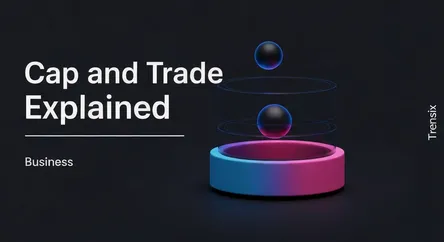Business
Cap and Trade Explained

Discover Cap and Trade, a market-based approach to controlling pollution by providing economic incentives for reducing emissions.
What is it?
Cap and Trade is a market-based environmental policy designed to reduce pollution. A government or regulatory body sets a firm limit, or 'cap', on the total amount of a specific pollutant, like carbon dioxide, that can be emitted over a period. This cap is gradually lowered over time to meet reduction goals. Allowances, each permitting a certain amount of emissions, are then distributed or auctioned to companies within the regulated sectors. Firms that can reduce their emissions at a low cost can sell their excess allowances to companies for whom reducing emissions is more expensive. This creates a 'trade' system, providing a financial incentive to innovate and pollute less.
Why is it trending?
As global concerns about climate change intensify, governments are seeking effective and economically efficient ways to meet emissions reduction targets, such as those under the Paris Agreement. Cap and Trade is trending because it offers a flexible, market-driven alternative to rigid command-and-control regulations. It encourages innovation in clean technology and allows industries to find the most cost-effective ways to cut pollution. High-profile examples, like the European Union's Emissions Trading System (ETS) and California's program, demonstrate its potential, keeping it at the forefront of policy discussions worldwide.
How does it affect people?
Cap and Trade can impact people both directly and indirectly. Companies facing the cost of purchasing emission allowances may pass these expenses on to consumers, potentially leading to higher prices for electricity, fuel, and manufactured goods. However, the system also drives investment in renewable energy and green technologies, which can create new jobs. Furthermore, revenue generated from auctioning allowances is often reinvested into community projects, renewable energy initiatives, or returned to citizens as dividends or rebates to offset higher costs. Ultimately, the policy aims to reduce air pollution, leading to public health benefits and a more stable climate.